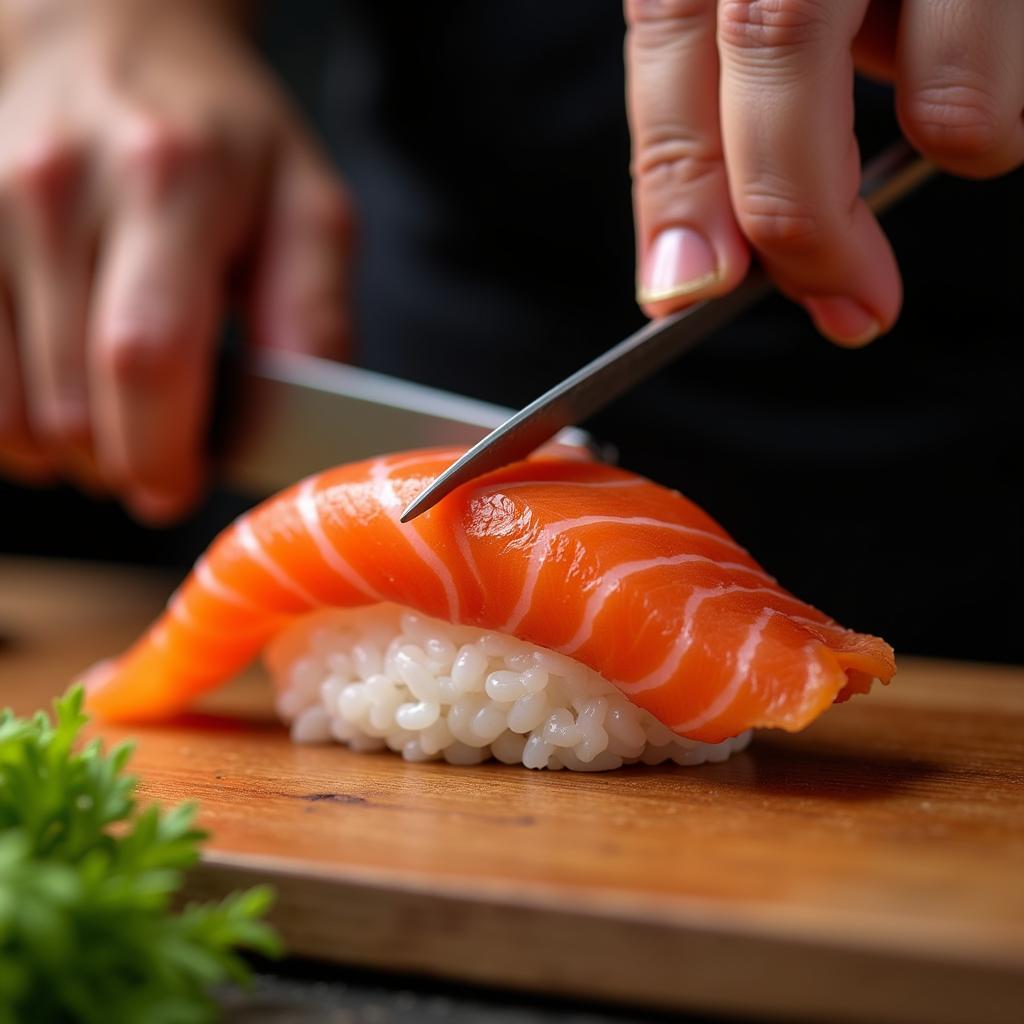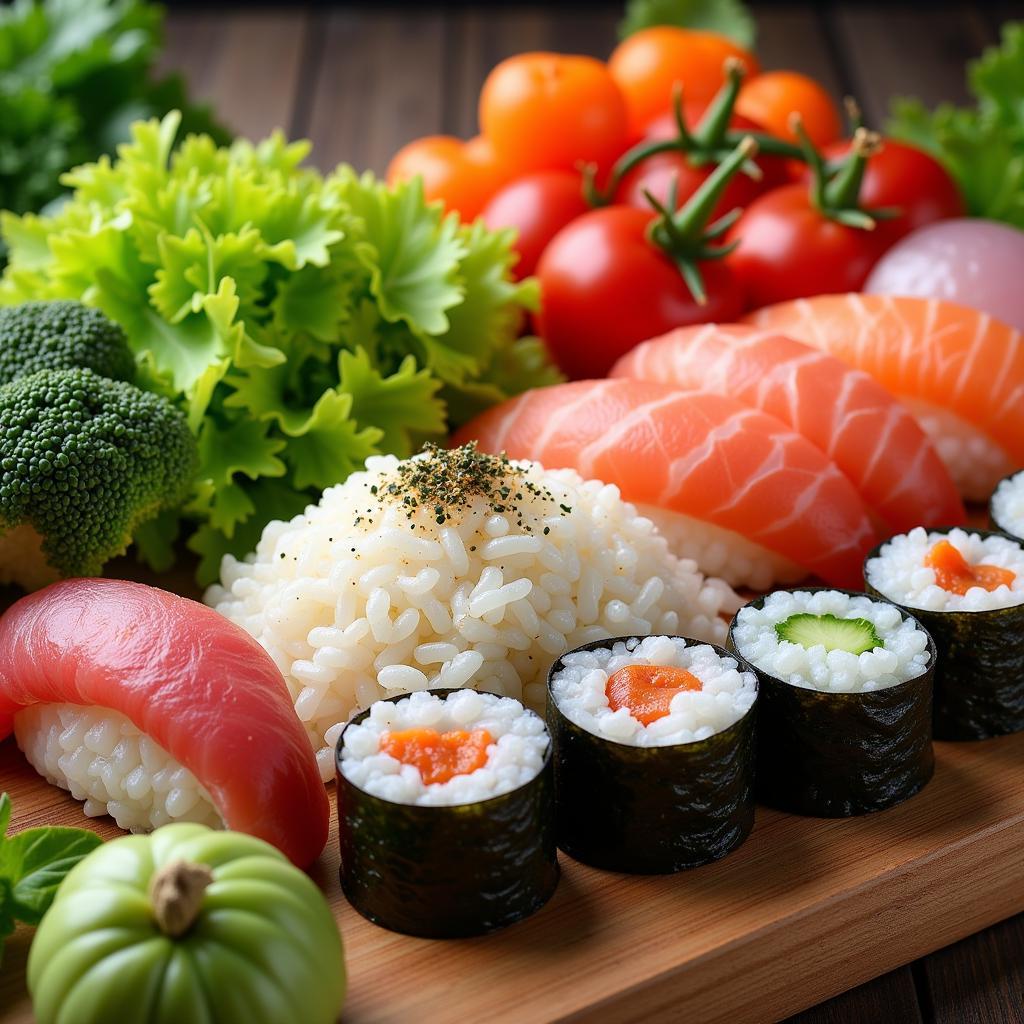Sushi, a cornerstone of Japanese cuisine, has captivated palates worldwide with its delicate flavors, artistic presentation, and healthy ingredients. From simple nigiri to elaborate rolls, sushi offers a diverse culinary experience that reflects centuries of tradition and innovation. This article delves into the fascinating world of sushi, exploring its history, preparation, variations, and cultural significance.
A Brief History of Sushi
Sushi’s origins can be traced back to Southeast Asia, where fermented fish preserved with rice was a common practice. This method, known as “narezushi,” eventually made its way to Japan around the 8th century. Over time, the fermentation process was shortened, and vinegar was introduced to further enhance the flavor and preservation of the fish. This evolution led to the birth of what we now recognize as modern sushi.
The Art of Sushi Making
Creating sushi is a meticulous process that requires skill, precision, and a deep understanding of ingredients. From selecting the freshest fish to perfectly seasoning the rice, every step contributes to the final masterpiece.
- Rice: Sushi rice is a special short-grain variety that is seasoned with a mixture of rice vinegar, sugar, and salt. The texture and flavor of the rice are crucial to the overall sushi experience.
- Fish: A wide array of fish and seafood is used in sushi, including tuna, salmon, mackerel, eel, and squid. The quality and freshness of the fish are paramount.
- Other Ingredients: Various other ingredients, such as vegetables, seaweed, and eggs, are incorporated into sushi rolls and other preparations.
 Sushi Chef Preparing Nigiri
Sushi Chef Preparing Nigiri
Types of Sushi
The world of sushi extends far beyond the familiar California roll. Here are some popular varieties:
- Nigiri: A simple yet elegant form of sushi consisting of a slice of raw fish draped over a molded ball of seasoned rice.
- Sashimi: Thinly sliced raw fish served without rice. This showcases the pure flavor and texture of the fish.
- Maki: Rolled sushi, often wrapped in seaweed (nori) and filled with various ingredients like fish, vegetables, and rice.
- Temaki: Hand-rolled cone-shaped sushi filled with rice, fish, and other ingredients.
Sushi Etiquette
While enjoying sushi, certain customs and etiquette should be observed:
- Soy Sauce: Pour a small amount of soy sauce into the small dish provided, and dip the fish side of the nigiri into the sauce, not the rice.
- Wasabi: A small amount of wasabi can be added directly to the sushi or mixed into the soy sauce, depending on preference.
- Ginger: Pickled ginger (gari) is served as a palate cleanser between different types of sushi.
Sushi and Health
Sushi is often lauded for its health benefits. It is a low-calorie, protein-rich food that provides omega-3 fatty acids, vitamins, and minerals.
“Sushi offers a balanced and nutritious meal option,” says Dr. Hana Sato, a renowned nutritionist specializing in Japanese cuisine. “The combination of fresh fish, rice, and vegetables provides a wide range of essential nutrients.”
 Fresh Ingredients for Sushi
Fresh Ingredients for Sushi
Sushi beyond Japan
Sushi’s popularity has exploded globally, with countless variations and adaptations emerging in different cultures. From fusion rolls to vegetarian options, sushi continues to evolve and delight food enthusiasts around the world.
“The adaptability of sushi is remarkable,” comments Chef Kenji Tanaka, a renowned sushi chef with over 20 years of experience. “It’s a cuisine that embraces creativity and innovation while staying true to its core principles.”
Conclusion
Sushi is more than just a meal; it’s an experience that combines culinary artistry, cultural tradition, and healthy eating. From its humble beginnings to its global acclaim, sushi continues to fascinate and satisfy. So, the next time you crave a delicious and healthy meal, remember the exquisite art of Japanese sushi.
FAQ
Is all sushi raw? No, many types of sushi incorporate cooked fish or other ingredients like vegetables and eggs.
What is the difference between nigiri and sashimi? Nigiri consists of raw fish on seasoned rice, while sashimi is simply thinly sliced raw fish served without rice.
Is sushi expensive? The price of sushi can vary depending on the ingredients and the restaurant.
Where can I learn to make sushi? Many culinary schools and online resources offer sushi-making classes.
What is the best way to store sushi? Sushi is best consumed fresh, but it can be stored in the refrigerator for a short period.
Need assistance? Contact us at Phone Number: 0372960696, Email: TRAVELCAR[email protected] or visit our address: 260 Cau Giay, Hanoi. We have a 24/7 customer support team.

